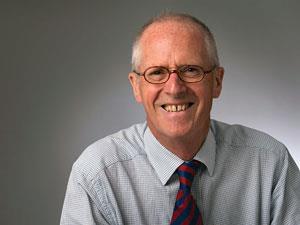The Government has endorsed a set of proposals by the National STEM director, John Holman, aimed at increasing the number of young people studying science and mathematics post-16 by informing them of the wide range of lucrative careers open to them

In May Bill Rammell, minister for lifelong learning, further and higher education, set out proposals for improving the information and advice given to young people on careers available to STEM (science, design and technology, engineering and mathematics) graduates. Working with the science base to improve young people's and their parents' awareness of the benefits of studying science was identified as one of the Government's priorities in the Next steps document published in 2003.1 The current proposals were developed by the newly appointed STEM director John Holman, who is also director of the National Science Learning Centre based at the University of York.
Four key areas
Holman identified four key areas that he believes will make a difference to students' attitudes towards science and science-related careers.
-
Getting high quality careers information and advice into schools from the beginning of Key Stage 3, through a variety of agents including subject teachers
Holman told Education in Chemistry, 'Evidence suggests that two-thirds of youngsters have made up their minds before they are 14 about the sorts of careers they want to pursue. Yet formal school guidance on careers usually starts when they are 16-18. This is too late. Key Stage 3 is a crucial time for giving careers advice to students and we should be weaving this into regular lessons as well as using the more formal careers advisory service. As soon as they enter secondary school we should be telling them about the wide range of careers that are available to them if they study chemistry, physics, biology and mathematics at A-level'.
Central to this strand, Holman explained, will be the Careers from science website which is being developed by the Science Council. Expected to go live in 2008, this single source of information, he said, will give students, parents and teachers an insight into what's available to STEM graduates, including the good salaries they can expect in science, engineering, finance, and the media, for example.
-
Creating a STEM careers awareness continuum in secondary schools
This would be a school's careers action plan, that draws on different resources to continue careers awareness through years 7, 8, and 9. Holman said that teachers could, for example, include a visit to a local science-based industry as part of Y7 science; use the Careers from science website during science lessons in Y8 to encourage students to think ahead to GCSE options, including triple science GCSE or the second maths GCSE (currently being developed by the Qualifications and Curriculum Authority (QCA)); and arrange for a role model such as a science and engineering ambassador (SEA) to visit science classes early in Y9. 'The idea of a careers continuum would mean that careers information and advice would not fall solely on the careers teacher, but would involve the whole science community - subject teachers, industry, HE, and professional bodies', he said. This initiative is expected to be trialled in a group of schools with a STEM specialism during 2008/9.
-
Appointment of a national STEM careers coordinator
The role of the coordinator would be to bring together all those bodies who are interested in promoting STEM careers at the national level and make sure they work together rather than as a series of individual initiatives. The coordinator would map the various activities being done nationally to promote STEM careers, which could then be linked, explained Holman, to appropriate parts of the school curriculum to help schools plan their own 'continuum'.
Holman suggests that professional bodies and industry, as well as the Government, would need to play their part in such a campaign.
The wider remit
The development of careers awareness in STEM subjects is just part of Holman's remit as the STEM director. Later this month he is expected to announce a framework of 10 schemes that will bring greater coherence to the STEM landscape, which has the overall aim of inspiring the next generation of STEM students.
In a speech to the BA Science Communication Conference in London in May, Holman outlined the rationale for STEM support. The recruitment of specialist subject teachers, continuing professional development for teachers, and programmes to encourage stimulating practical work as well as encouraging schools to offer triple science were high on Holman's list of priorities. Like the Royal Society of Chemistry (RSC), he is particularly keen to dispel the myths that inhibit teachers from doing practical demonstrations in class.
Holman told Education in Chemistry, 'What attracted me to this job was that it is an acknowledgement by Government that it can't solve the problem of young people's lack of interest in STEM on its own but the strong STEM community, if they all work together with Government support, can'.
'These are challenging times for science', said Holman, 'but there has never been, in the past 40 years of my career, quite such a will from all quarters - Government, learned societies, charities and industry - to work together to make science teaching more inspiring for youngsters'.
References
- Educ. Chem. 2003, 40 (2), 33






No comments yet